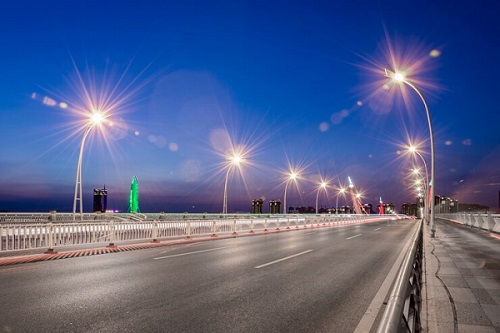Smartening Up the Streets: How IoT Technology is Redefining Urban Lighting Systems
In today’s rapidly evolving urban landscape, the integration of technology is reshaping the way cities function. One of the most significant advancements in this realm is the adoption of Internet of Things (IoT) technology in urban lighting systems. This innovative approach is revolutionizing traditional street lighting, paving the way for smarter, more efficient, and sustainable urban environments.
IoT technology involves the interconnection of devices and systems through the internet, enabling them to collect and exchange data. When applied to urban lighting, IoT transforms conventional streetlights into intelligent, interconnected assets that offer a multitude of benefits for both cities and their residents.
Enhanced Energy Efficiency
One of the primary advantages of IoT-enabled urban lighting systems is the significant improvement in energy efficiency. By incorporating sensors and smart controls, these systems can dynamically adjust lighting levels based on real-time conditions such as pedestrian activity, traffic flow, and ambient light. This targeted approach not only reduces energy consumption and operational costs but also minimizes light pollution, contributing to a more sustainable and eco-friendly urban environment.
Improved Maintenance and Management
IoT technology equips urban lighting systems with remote monitoring and diagnostics capabilities, allowing for proactive maintenance and swift issue resolution. By continuously gathering data on performance and operational status, maintenance teams can identify potential faults or malfunctions in real time, streamlining maintenance processes and minimizing downtime. Furthermore, the ability to remotely control and adjust individual lights optimizes system management, enhancing overall reliability and service quality.
Enhanced Safety and Security
The integration of IoT in urban lighting contributes to improved safety and security within urban spaces. Advanced sensors and cameras can be integrated into lighting fixtures, enabling real-time monitoring of public areas and facilitating rapid response to potential safety concerns. Additionally, smart lighting systems can be programmed to adapt to specific situations, such as increasing illumination levels in response to emergencies or providing targeted lighting in high-traffic areas, enhancing overall safety for pedestrians and motorists.
Data-Driven Insights for Urban Planning
The wealth of data generated by IoT-enabled urban lighting systems offers valuable insights for urban planners and policymakers. By analyzing usage patterns, traffic flows, and environmental conditions, cities can make informed decisions regarding infrastructure development, public space utilization, and sustainability initiatives. This data-driven approach supports the creation of more livable, efficient, and responsive urban environments, ultimately benefiting the quality of life for residents.
In conclusion, the integration of IoT technology in urban lighting systems represents a significant step towards creating smarter, more sustainable cities. By harnessing the power of interconnected devices and data-driven insights, cities can optimize energy usage, streamline maintenance processes, enhance safety, and make informed urban planning decisions. As IoT continues to evolve, the potential for further innovation in urban lighting and infrastructure is vast, promising a brighter, more efficient future for urban spaces around the world.
